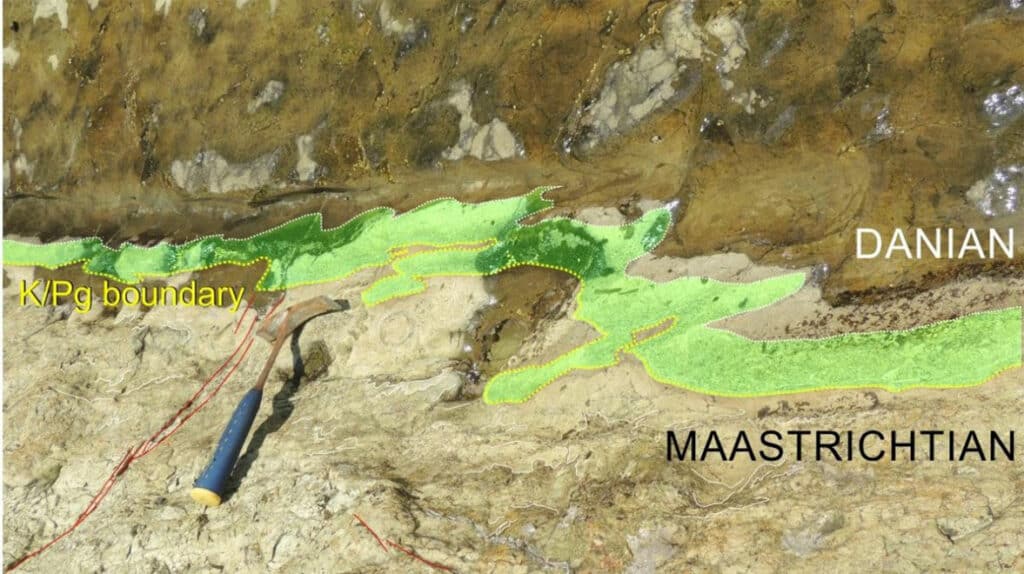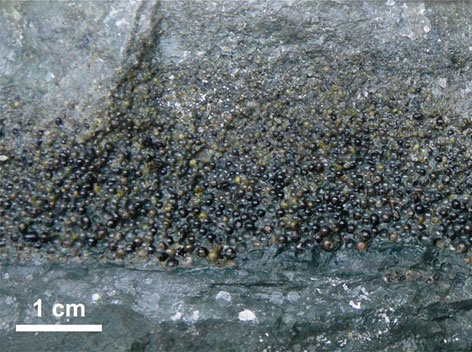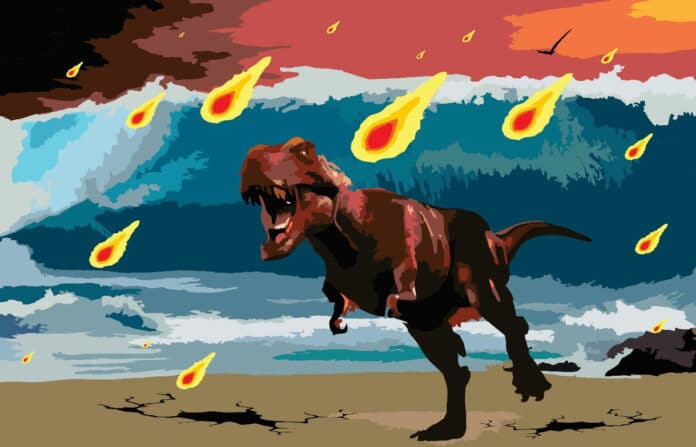The Chicxulub impact event was an ~100 million megaton blast that triggered the last mass extinction in Earth’s history. Although numerous studies report catastrophic sedimentation related to the seismicity associated with the Chicxulub impact, there is no detailed record of the effects and timing of the impact on the terminal Maastrichtian sedimentary record.
According to a new study, the magnitude of the impact released energy equivalent to 1023 joules. It was high enough to generate gigantic earthquakes (Magnitude 10+) and mega-tsunamis and form a crater of 180 – 200 km in diameter in the Yucatan Peninsula. Therefore, the impact is believed to trigger a massive earthquake that shook the planet for weeks to months after the collision.
Hermann Bermúdez will present evidence of this “mega-earthquake” at the upcoming GSA Connects meeting in Denver this Sunday, 9 October. Earlier this year, with support from a GSA Graduate Student Research Grant, Bermúdez visited outcrops of the infamous Cretaceous-Paleogene (K-Pg) mass extinction event boundary in Texas, Alabama, and Mississippi to collect data, supplementing his previous work in Colombia and Mexico documenting evidence of the catastrophic impact.

On Gorgonilla Island in Colombia, Bermudez discovered spherule deposits in 2014 while conducting fieldwork there. These deposits are layers of sediment containing tiny glass beads (as large as 1.1 mm), and shards are known as tektites and “microtektites” that were ejected into the atmosphere during an asteroid impact. These glass beads were created when the impact’s heat and pressure melted and dispersed the Earth’s crust, ejecting tiny, melted blobs into the atmosphere, which later fell back to the surface as glass due to gravity.
Approximately 2 kilometers below the ocean’s surface, the exposed rocks on the coast of Gorgonilla Island tell a tale. When the asteroid hit, sand, mud, and small marine life accumulated around 3,000 km southwest of the impact location on the ocean floor. Bermudez credits the soft-sediment deformation maintained in the outcrops today in layers of mud and sandstone up to 10-15 meters below the sea bottom to the shaking from the impact.
Faults and deformation due to shaking continue up through the spherule-rich layer deposited post-impact. This indicates that the shaking must have continued for the weeks and months it took for these finer-grained deposits to reach the ocean floor. Above those spherule deposits, preserved fern spores signal the first recovery of plant life after the impact.

Bermúdez explains, “The section I discovered on Gorgonilla Island is a fantastic place to study the K-Pg boundary because it is one of the best-preserved, and it was located deep in the ocean, so it was not affected by tsunamis.”
Both Mexico and the United States have preserved evidence of the mega-deformation. Quake’s Bermudez saw signs of liquefaction at the El Papalote exposure in Mexico, which occurs when violent shaking forces water-saturated sediments to flow like a liquid. He recorded faults and cracks in Mississippi, Alabama, and Texas that were probably caused by the mega-quake. Additionally, he describes the tsunami deposits that were left behind by a massive wave that was a component of the cascading disasters brought on by the asteroid collision at several outcrops.
Bermúdez will discuss evidence for the mega-earthquake at the GSA Connects meeting in Denver on Sunday, 9 October. He will also present a poster about his observations of tsunami deposits and earthquake-related deformation on Monday, 10 October, which will be available in English, Spanish, Italian, French, and Chinese. In discussing his research, he emphasized the critical role collaboration has played in visiting and studying so many outcrops that tell the story of this extreme event in Earth’s history.
Journal Reference:
- Hermann Bermúdez, Montclair State University. The Chicxulub Mega-Earthquake: Evidence from Colombia, Mexico, and the United States. Geological Society of America Abstracts with Programs. Vol 54, No. 5, 2022. DOI: 10.1130/abs/2022AM-377578. Sunday, 9 October 2022, 3:45 PM-4:00 PM
